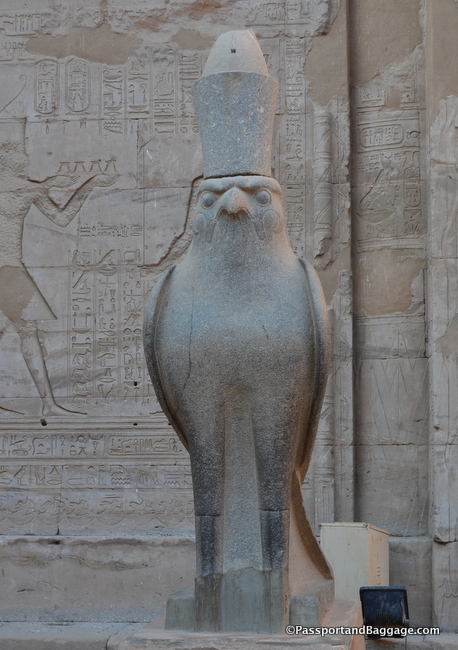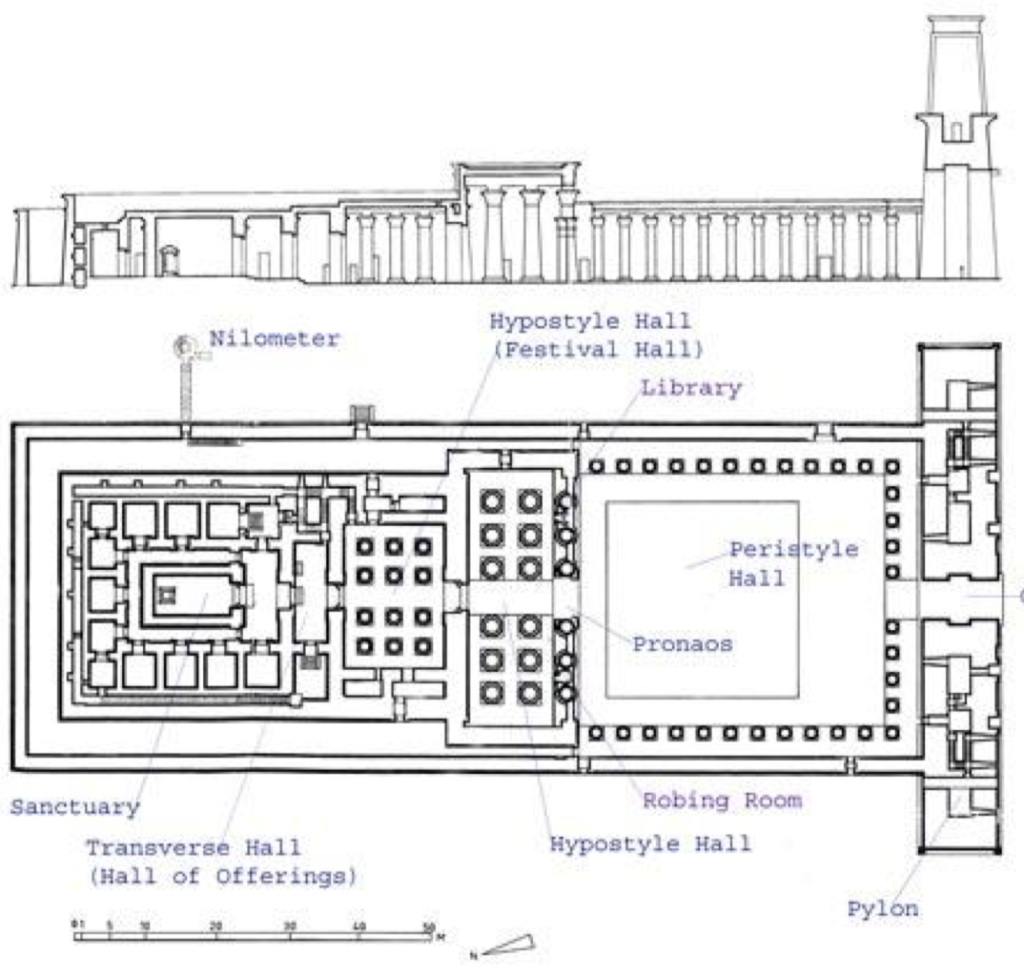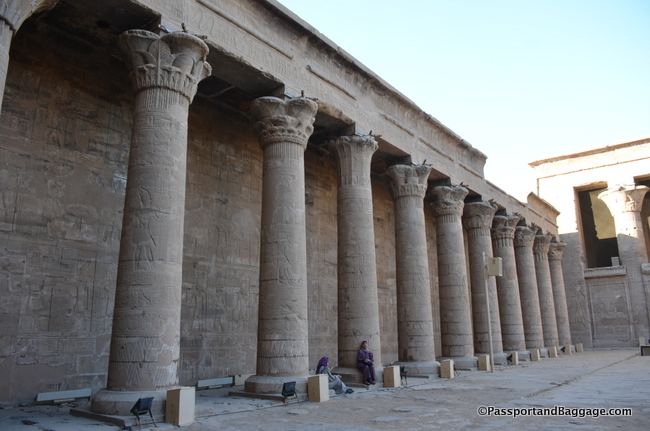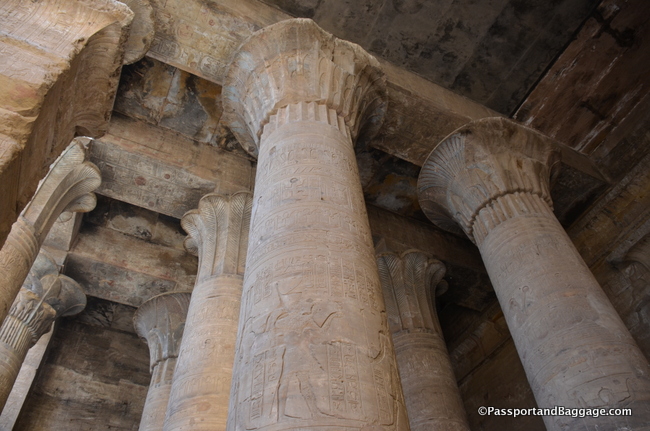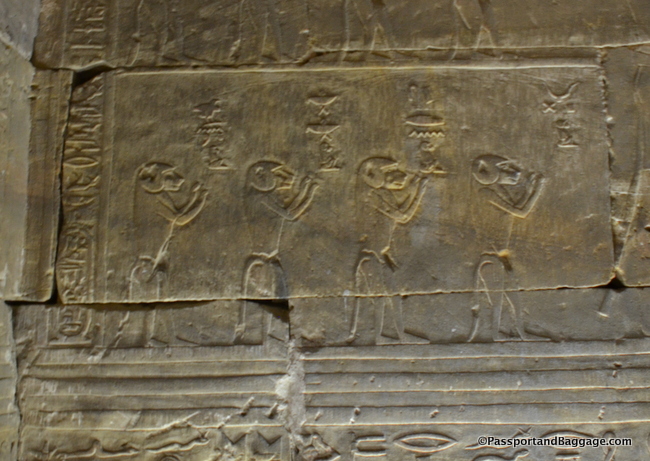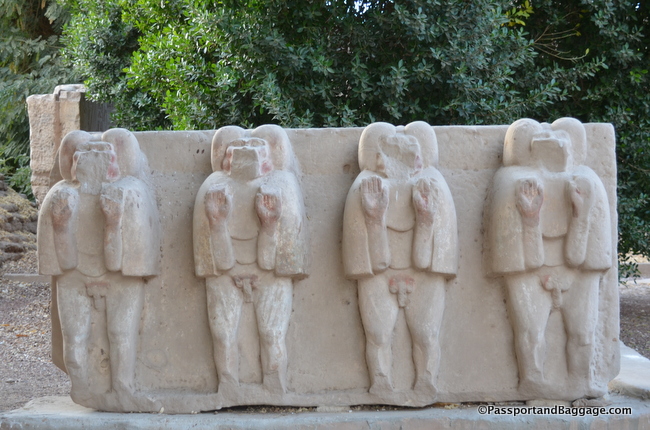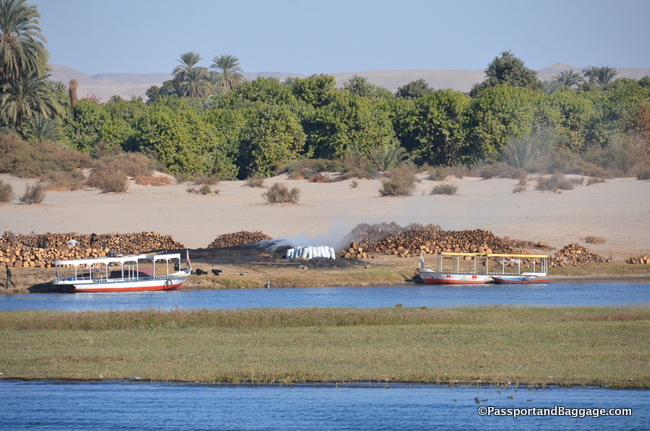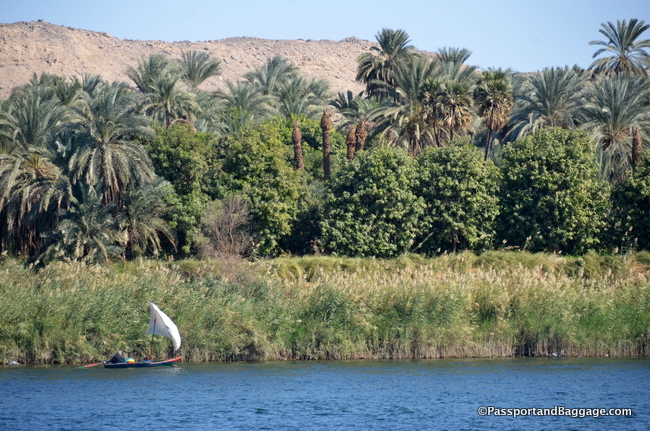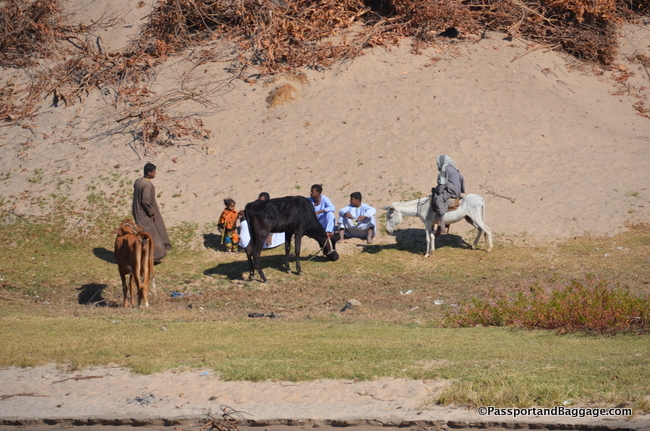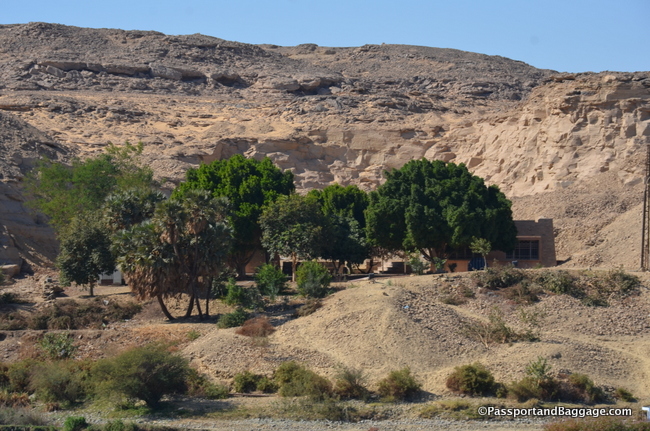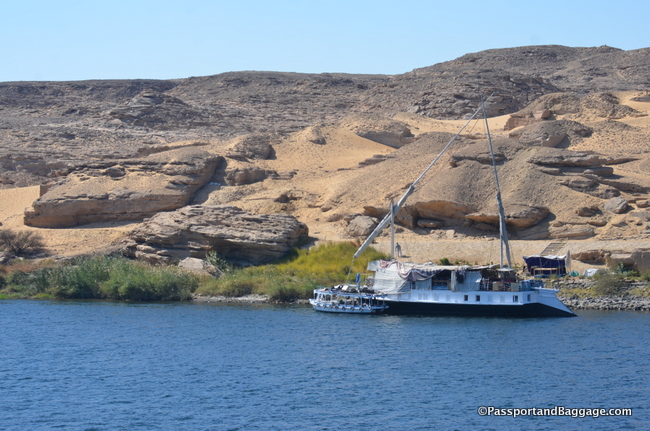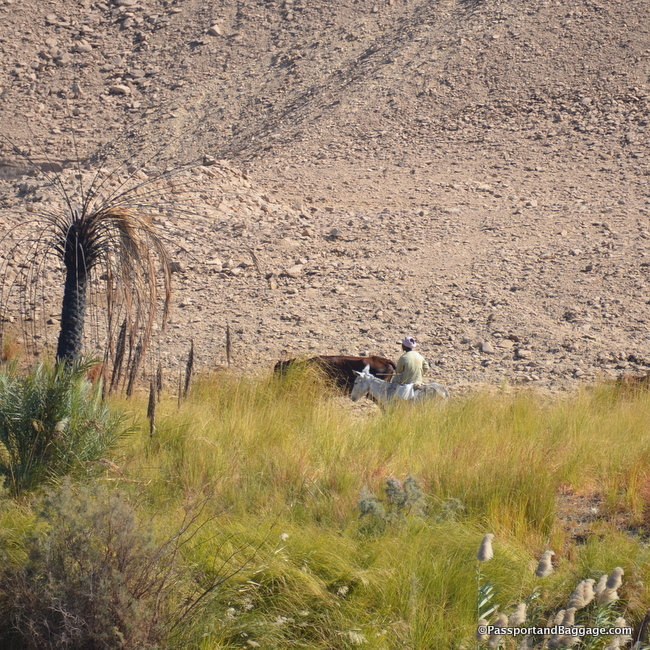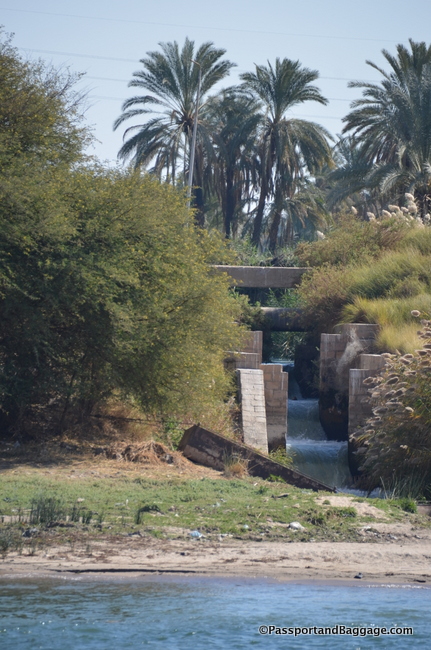Edfu
December 29, 2018
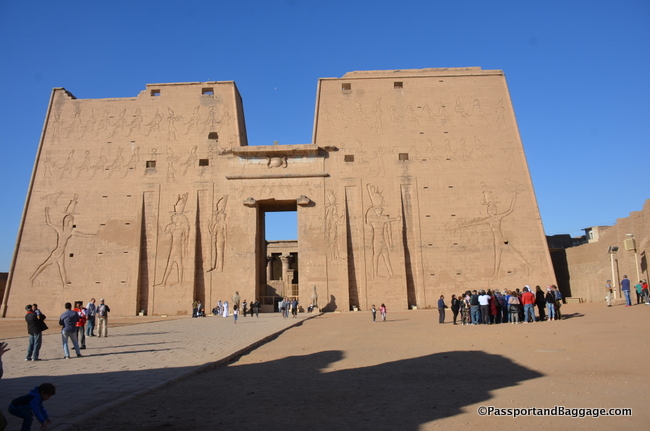 The Temple of Edfu is located on the west bank of the Nile in Upper Egypt. It is one of the best-preserved shrines in Egypt. The temple was built in the Ptolemaic Kingdom between 237 and 57 BCE, of sandstone. The inscriptions on its walls have a wealth of information on language, myth, and religion during the Hellenistic period in Egypt.
The Temple of Edfu is located on the west bank of the Nile in Upper Egypt. It is one of the best-preserved shrines in Egypt. The temple was built in the Ptolemaic Kingdom between 237 and 57 BCE, of sandstone. The inscriptions on its walls have a wealth of information on language, myth, and religion during the Hellenistic period in Egypt.
Edfu was one of several temples built during the Ptolemaic Kingdom, including the Temple of Kom Ombo, and Philae which were in my last post here.
Edfu is dedicated to the god Horus. Horus was the earliest state god of Egypt, the son of Osiris and Isis and husband of Hathor. He is the manifestation of divine kingship, regarded as the prince of gods and patron of the living ruler. He is often depicted hawk-headed with the double crown of Egypt or the Pschent. Generally referred to it as Sekhemty meaning the Two Powerful Ones. It combined the Red Deshret Crown of Lower Egypt and the White Hedjet Crown of Upper Egypt.
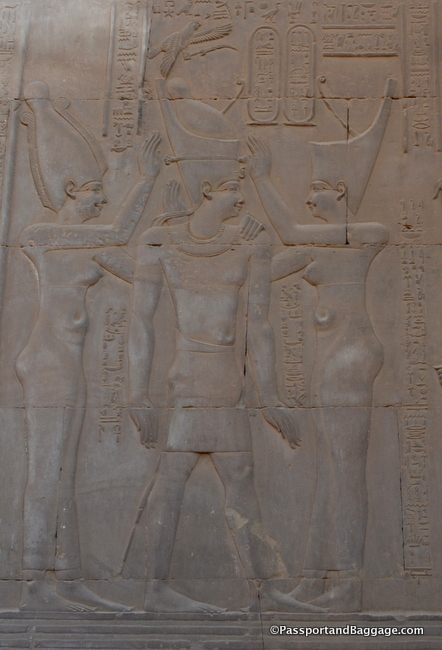
A frieze showing the gods of Upper (the Hedjet on the right) and Lower (the Deshret on the right) Egypt crowing a king and joining them into one crown.
Edfu temple has a classic Ptolemic architecture layout.
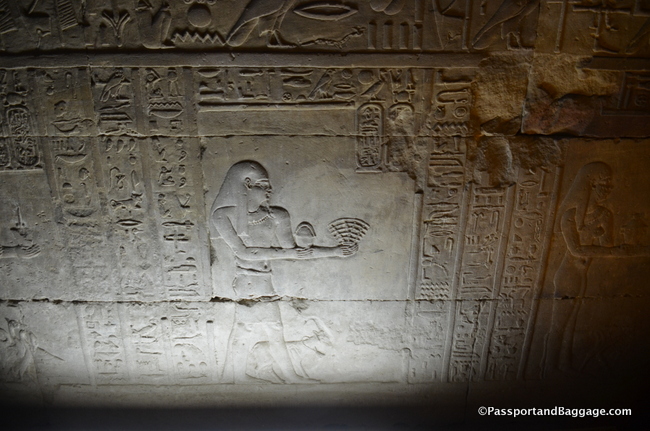
While the item in the hands of this person is indicating the essence of incense all the guides like to say it is an ancient Egyptian wifi signal
What is so difficult to comprehend is the amount of relief on the walls of every structure one views in Egypt. Through modern media, we understand about hieroglyphics and pictures on walls, but what is not grasped until you are inside these spaces is that every square inch of the walls were carved and then painted.
Each and every symbol has a significance and distinct meaning, one of my favorites were the Baboons. Known as Babi or Baba, the name is usually translated as “bull of the baboons”. Since baboons exhibit many human characteristics, it was believed that they were deceased ancestors.
We were sailing down the Nile on a boat from site to site. Here are some Nile river sites from Edfu to Luxor.
Egypt is surrounded by desert to the east, west, and south, and bordered by the Mediterranean in the north, and because of this receives little annual precipitation, making irrigation in Egypt dependent upon the Nile. The annual flood of the Nile is caused by spring rains in Ethiopia washing down from the Ethiopian highlands and traveling north and west along the Blue Nile toward what is now Khartoum, where it joins the White Nile and flows north to the Mediterranean. In ancient times, the river’s flooding provided natural inundation for crops. After the building of the Aswan Dam, irrigation has relied on canals and ditches to provide water to the farmers. The photo above shows unused water flows back into the Nile.
A short history lesson that may help:
The Ptolemaic Kingdom was a Hellenistic (Greek) kingdom based in ancient Egypt. It was ruled by the Ptolemaic dynasty, which started with Ptolemy I Soter’s accession after the death of Alexander the Great in 323 BC and which ended with the death of Cleopatra and the Roman conquest in 30 BC.
